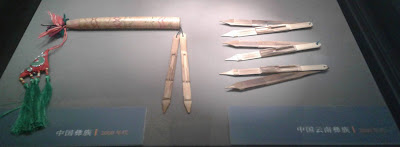english translation below *
GIORNI E ORARI:DOROMBO :Domenica 17 Settembre dalle 15.00 alle 16.30
DANZE UNGHERESI :Domenica 17 Settembre dalle 16.30 alle 18.00
COSTO 25 euro entrambi ,15 euro DOROMBO e 15 euro DANZE UNGHERESI.
PER ISCRIZIONE VENIRE DA GAMMAZITA (p.zza federico di svevia, 92) CHIUSURA ISCRIZIONI 13 SETTEMBRE
Il Doromb è lo scacciapensieri ungherese, strumento che insieme al violino e al “tapan” (Tamburo bipelle) infiamma le tradizionali danze in cerchio che dalla partendo dalla lontana Transilvania faranno scuotere dal profondo le basole del selciato etneo.
AVVERTENZA: Questi laboratori potrebbero mettere in risonanza corde nascoste del vostro mondo interiore, e farvi scoprire connessioni profonde tra culture di terre lontane come Sicilia ed Europa Orientale.
In collaborazione con MoMu Mondo di Musica e Associazione Musicale Etnea, come anteprima del Marranzano World Fest, che si svolgerà poi a Catania dal 29 settembre al 1 ottobre.
DETTAGLI
Un workshop di DOROMBO per imparare a suonare uno dei più antichi strumenti popolari partendo dalle basi della produzione del suono, fino ad alcune tecniche dinamiche più avanzate, includendo ritmi e melodie tradizionali ungheresi della cultura Moldvan Chango.
ADATTO a principianti tanto quanto per suonatori più esperti.
DETTAGLI
Workshop di danze ungheresi con Zoord.
Venite a provare in prima persona il potere aggregativo delle tradizionali danze in cerchio della cultura Csángó dalla Transilvania!
I membri del gruppo Zoord wi insegneranno tutti i passi e suoneranno dal vivo per accompagnare i danzatori. Tutte le danze sono molto semplici, divertenti ed energetiche. Il laboratorio è adatto anche a chi non ha alcuna esperienza nella danza o senso del ritmo.
L’etnia Csángó [pronunciato "chaan-go”] è formata da una comunità di lingua ungherese che in tempi remoti si è spostata dalla Transilvania (nell’attuale Romania) scavalcando i monti Carpazi per stabilirsi nell’attuale Moldavia. Questa comunità è rimasta dunque relativamente isolata dal resto della popolazione ungherese, ed ha così preservato caratteri molto arcaici nella lingua così come nella musica e nelle danze.
Video: https://youtu.be/
Il Docente: Aron Szilagyi, figlio del celebre inventore e costruttore Zoltan Szilagyi, ha iniziato a suonare all’età di tre anni ed ha potuto imparare dai più importanti virtuosi contemporanei, giungendo alla creazione di uno stile ed una tecnica esecutiva assolutamente unici. Il suo approccio combina le tecniche tradizionali con la sperimentazione che giunge al confine con l’elettronica. Le sue esibizioni dinamiche sono sempre di sicuro impatto sul pubblico che alterna stati di contemplazione meravigliata alla danza scatenata. Ha tenuto corsi e laboratori a Tokio, New York, Delhi, Londra, Parigi, Varsavia, Berlino, Dakar, e in molti altri luoghi, ed ha insegnato fino ad oggi ad almeno 6000 studenti in giro per il mondo.
Concert video: http://www.youtube.com/
Workshop video: http://www.youtube.com/
http://www.youtube.com/
(Facebook event page) I Workshop di Ursino Buskers 2017
* english (google translate)
DAYS AND TIMES:
DOROMBO: Sunday, September 17 from 15.00 to 16.30
HUNGARIAN DANCES: Sunday 17 September from 16.30 to 18.00
COST 25 euro both, 15 euro DOROMBO and 15 euro DANCES UNGHERESI.
FOR SUBSCRIBE TO GET FROM GAMMAZITA (eg federico svevia, 92) CLOSING REGISTRATION 13 SEPTEMBER
The Doromb is the Hungarian scacciapensieri, instrument that together with the violin and the "tapan" (Drum bipelle) flashes the traditional dances in the circle that from starting from the far Transylvania will shake from the depths of the bases of the trenches etneo.
WARNING: These workshops could resonate the hidden ropes of your inner world, and make you discover deep connections between cultures of far-reaching lands like Sicily and Eastern Europe.
In collaboration with MoMu World Music and Etnea Music Association, as a preview of the Marranzano World Fest, which will take place in Catania from 29 September to 1 October.
DETAILS
A DOROMBO workshop to learn to play one of the oldest popular instruments from sound production bases, to some of the most advanced dynamic techniques, including Hungarian traditional rhythms and melodies of Moldova's Chango culture.
ADAPT for beginners as much as for more experienced players.
DETAILS
Hungarian dances workshop with Zoord.
Come and try firsthand the aggregate power of the traditional dances in the circle of Csángó culture from Transylvania!
The members of the Zoord group will teach all the steps and play live to accompany the dancers. All dances are very simple, fun and energetic. The lab is also suitable for those who have no experience in dance or sense of rhythm.
The Csángó ethnic group is formed by a Hungarian-speaking community that has moved away from Transylvania (now Romania) to overtaking the Carpathian mountains to settle in present-day Moldavia. Therefore relatively isolated from the rest of the Hungarian population, and thus preserved very archaic characters in the language as well as in music and dances.
Video: https://youtu.be/Mk8POWxav58?t=2m3s
Teacher: Aron Szilagyi, son of the famous inventor and builder Zoltan Szilagyi, started playing at the age of three and was able to learn from the most important virtuoso contemporary, reaching the creation of an absolutely unique style and technique. His approach combines traditional techniques with experimentation reaching the boundary with electronics. His dynamic performances are always sure of impact on the audience that alternates astonished contemplation states with the unleashed dance. He has held courses and workshops in Tokyo, New York, Delhi, London, Paris, Warsaw, Berlin, Dakar and many other places and has taught to date at least 6,000 students around the world.
Concert video: http://www.youtube.com/watch?v=xhvt2EMhfsY
Workshop video: http://www.youtube.com/watch?v=dtpUn-zdxw4
http://www.youtube.com/watch?v=0xiiiHBvr_Y
(Facebook event page) I Workshop di Ursino Buskers 2017





















